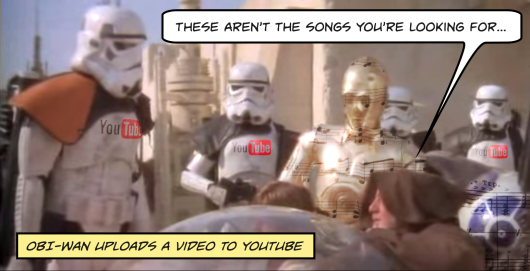How would you like to use whatever music you want in your videos without YouTube muting or deleting them? How altered would the sound have to be to get past automated copyright detectors? What kind of an aural world can exist on the edges of computational listening?
I’ve submitted a proposal for the Rhizome Net Art Microgrants called Music Obfuscator that will address these questions. The many proposals they received will first be narrowed by Rhizome member votes, so I would appreciate your vote!
The listing order is randomized for each user so I can’t link directly to my entry, but if you visit the project index you can search for my name (“Ben Grosser”), select it, and then vote for it there. While you’re there, you get three votes total, so also look at the other submissions and vote your faves. Viewing and/or voting on projects requires (free) registration for those new to the site, but this makes it a great opportunity to join Rhizome if you haven’t already! Voting ends September 10th.
Here’s the abstract for my project, the Music Obfuscator:
Music Obfuscator
At the behest of corporate copyright holders, media sharing sites like YouTube and Vimeo have implemented listening algorithms designed to identify uploaded music. However, these “Content ID” systems are designed to presume all use is illegal use; every match is automatically flagged, muted, and/or removed. The Music Obfuscator will enable users to hide music from Content ID. Each audio track submitted to the Obfuscator will be altered using a variety of signal processing techniques. The degree of alteration will be adjustable in order to accommodate changes in detection systems over time. How drastic will the changes need to be to evade detection? What kind of an aural world can exist on the edges of computational listening? The Music Obfuscator will help us understand the answers to these questions. The system will be web-based, allowing easy drag-and-drop of audio files, and—with permission—will archive obfuscated results for others to browse.
